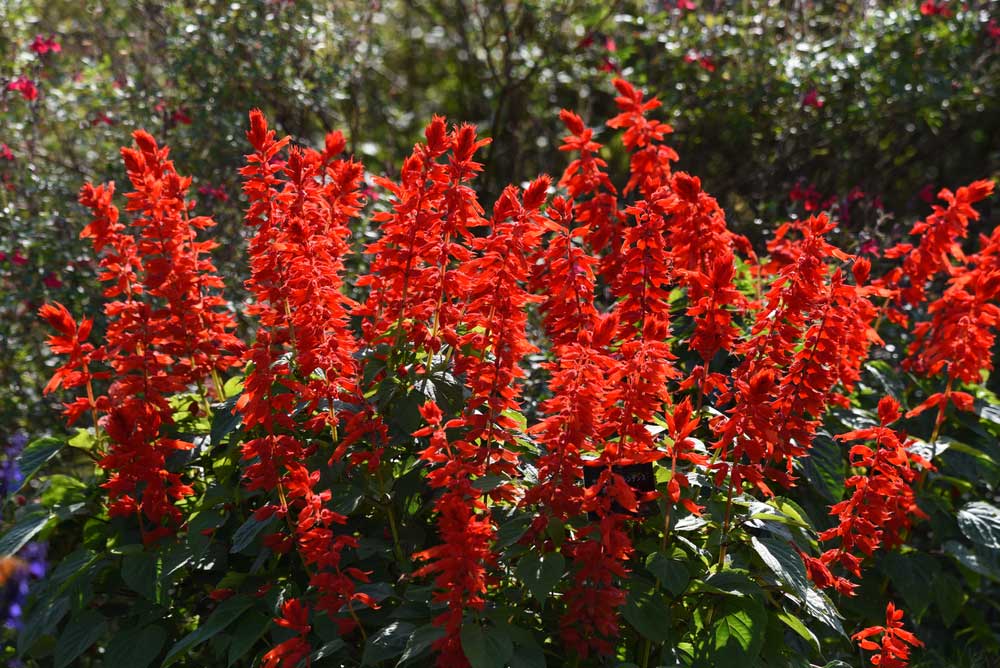
Salvia is a large genus of plants that is made up of annuals, perennials, and some shrubs. There are more than 1,000 species of salvia, and many of the species carry the name “sage.”
Salvia is part of the mint family of plants and has a strong, pleasant scent. With its scent, it attracts many bees, butterflies, and hummingbirds.
Most species of salvia are perennials. However, some of the more popular salvia plants are annuals that grow in colder regions. They are known for their lengthy bloom period.
These plants are the perfect addition to your garden, offering you an array of different colors to choose from.
Here is a list of 15 species of salvia that can brighten up your garden.
Scarlet Sage (Salvia spendens)

This type of salvia is typically called red salvia. It is considered a tropical perennial, but it can also be grown annually. This plant usually has bright red flowers. Some cultivars offer scarlet sage with white, salmon, burgundy, lavender, pink, and orange flowers. This plant originates from Brazil, flourishing in growing zones 10-11. The height of these plants can range from 12 to 24 inches. Scarlet sage grows best in environments with full to partial sun exposure.
Mealycup Sage (Salvia farinacea)
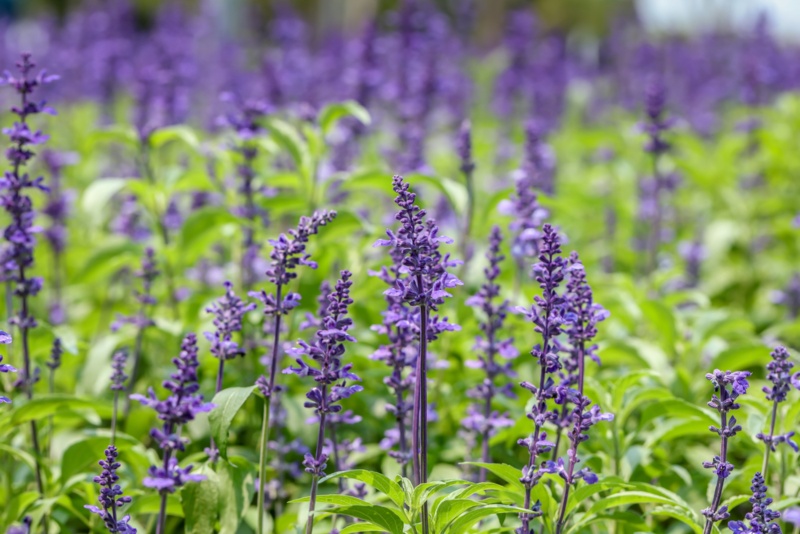
This type of salvia comes in a variety of colors, such as blue, purple, and lavender. This type of sage has a more extended bloom period than the scarlet sage. It produces flowers from May until frost. This plant originated from Texas and Mexico, flourishing in growing zones 7-11. The height of these plants can range from 1-3 feet. Mealycup sage grows best in environments with full to partial sun exposure.
Texas Sage (Salvia coccinea)

This type of salvia has red blossoms. However, there are some with pink and coral blooms. Summer Jewel Pink is one of the prettiest salvias. Texas sage is considered a perennial in warm climates. This plant originated from the Southern United States and Mexico, flourishing in growing zones 8-10. The height of these plants can range from 1-2 feet. Texas sage grows best in environments with full to partial sun exposure.
Woodland Sage (Salvia nemerosa)

Woodland sage is also known as violet sage. It is a perennial salvia that has purple and lavender blossoms. It typically grows from June to September. This plant has bear lance-shaped leaves. This plant originated from Europe and west-central Asia, flourishing in growing zones 4-8. The height of these plants can range from 8 to 24 inches. Woodland sage grows best in environments with total sun exposure.
Autumn Sage (Salvia greggii)

Autumn sage is a shrubby salvia plant. It is a perennial that blooms hot pink flowers. It blooms from summer through early fall while attracting insects like butterflies and bees. This plant originated from Texas and northern Mexico, flourishing in growing zones 6-9. The height of these plants can range from 2-3 feet. Woodland Sage grows best in environments with total sun exposure.
Wood Sage (Salvia x sylvestris)

Wood sage is a hybrid salvia. This plant is a cross between S. nemorosa and S. pratensis. One popular hybrid of this species is called “May Night,” which has blue-violet flowers. It blooms from May to June. This plant originated from Europe and Western Asia, flourishing in growing zones 4-8. The height of these plants can range from 18 to 25 inches. Wood Sage grows best in environments with full sun exposure.
Common Sage (Salvia officinalis)
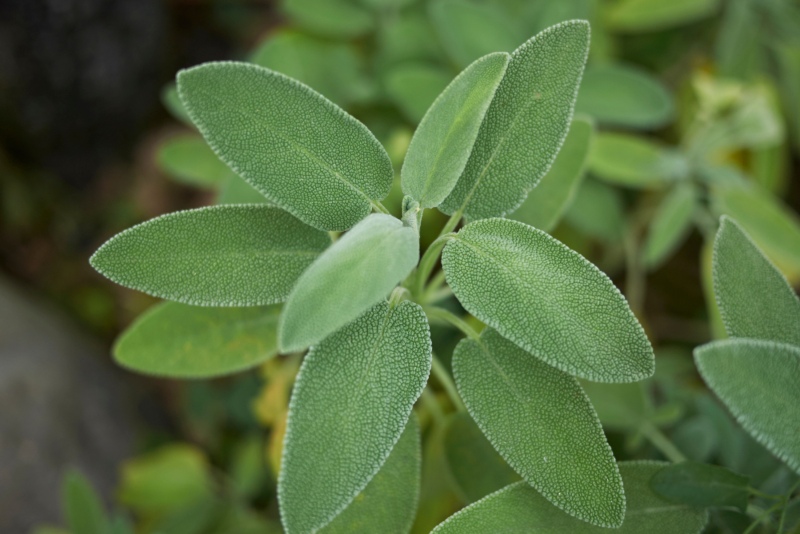
Common sage is a common culinary herb. It is a woody-stemmed perennial that works well in gardens and as an ornamental plant in rock gardens. It has lavender-blue blossoms that spike in June. This plant originated from the Mediterranean and North Africa, flourishing in growing zones 4-8. The height of these plants can range from 24 to 30 inches. Common Sage grows best in environments with full sun exposure.
Pineapple sage (Salvia elegans)
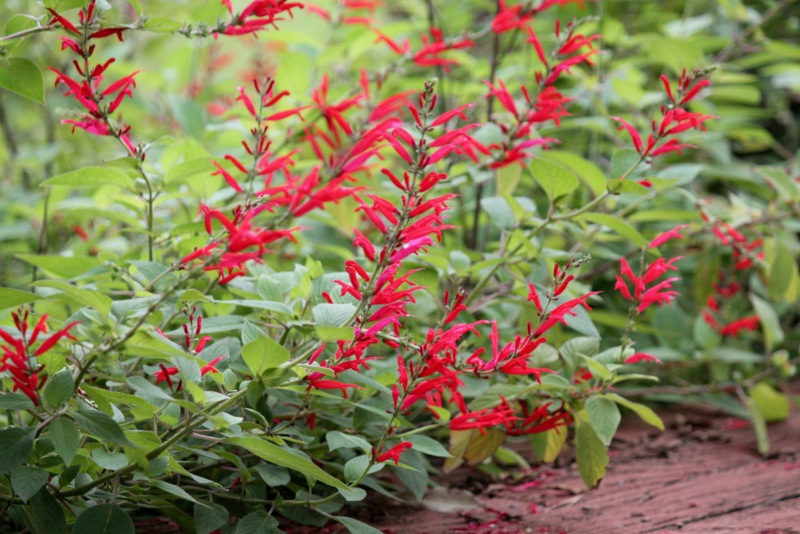
This type of salvia is a shrubby perennial. It has a pineapple-like scent, primarily when you crush the leaves, and it blooms scarlet flowers in late summer to mid-fall. This plant grows the best in warm climates. This plant originated from Mexico and Guatemala, flourishing in growing zones 8-10. The height of these plants can range from 3-4 feet. Pineapple Sage grows best in environments with full sun exposure.
Mexican Bush Sage (Salvia leucantha)
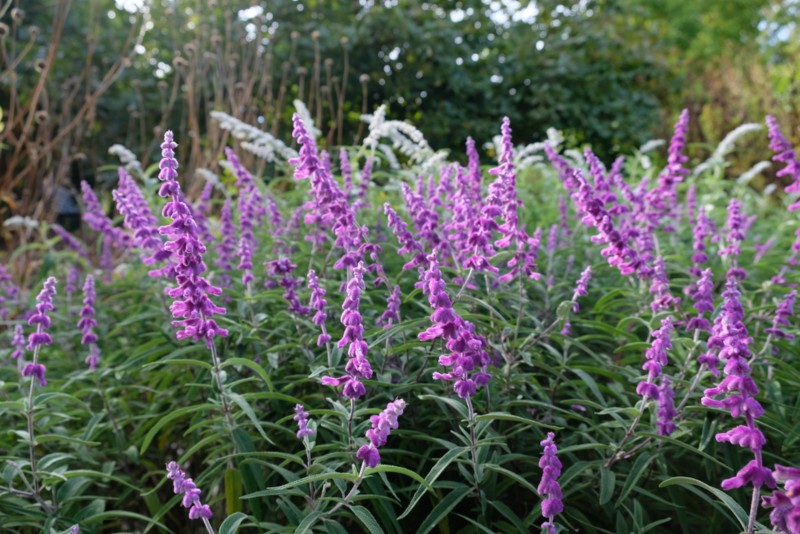
This type of Salvia is an evergreen perennial that tends to be shrubby. It produces purple and white-and-purple flowers from late summer until winter. Butterflies and hummingbirds love this species. This plant originated from Central America and Mexico, flourishing in growing zones 8-10. The height of these plants can range from 2-3 feet, and they grow best in environments with total sun exposure.
Diviner’s Sage (Salvia divinorum)
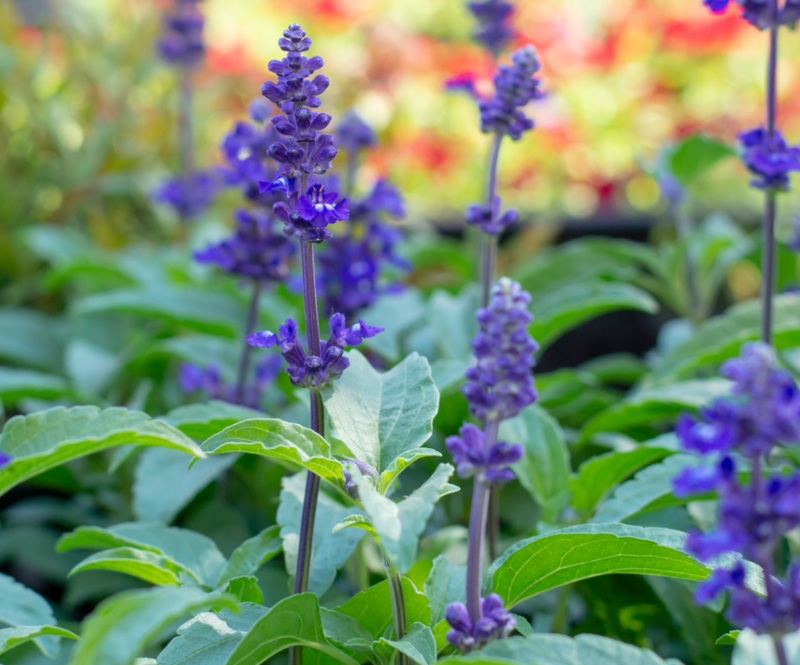
Diviner’s sage is not considered ornamental like other plants, but it has beautiful purple flowers. There is a substance in the leaves of this sage that can sometimes cause hallucinations. This plant originated in Southern Mexico, flourishing in growing zones 3-9. The height of these plants can range from 3-5 feet. Diviner’s sage grows best in environments with full sun exposure.
Baby Sage (Salvia microphylla)
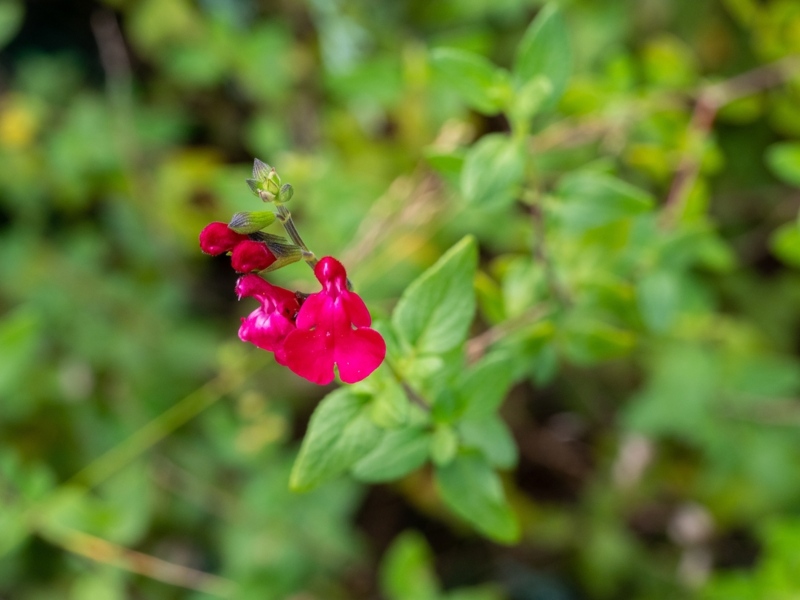
Baby sage produces brilliant bright red blossoms, earning its nickname red velvet sage. Their blooming season is early summer to frost, and they attract bees, butterflies, and other insects. This plant originated in Arizona and Mexico, flourishing in growing zones 7-12. The height of these plants can range from 2-4 feet. Baby sage grows best in environments with total sun exposure.
Russian Sage (Perovskia atriplicifolia)
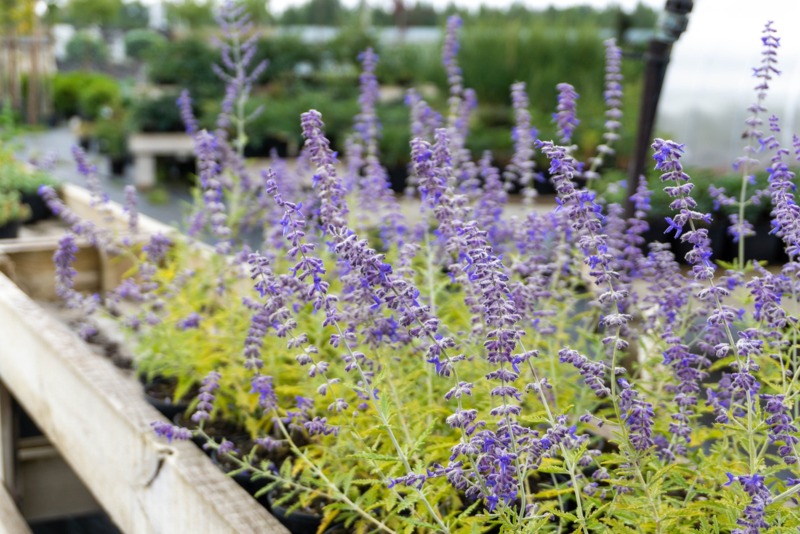
Russian sage is a perennial that blooms lilac-blue flowers. It is perfect for pollinator gardens, exuding a wonderful fragrance. It blooms in mid-summer to late summer and grows in zones 4-9. The height of these plants can range from 3-4 feet. Baby sage grows best in environments with full sun exposure.
Meadow Sage (Salvia pratensis)
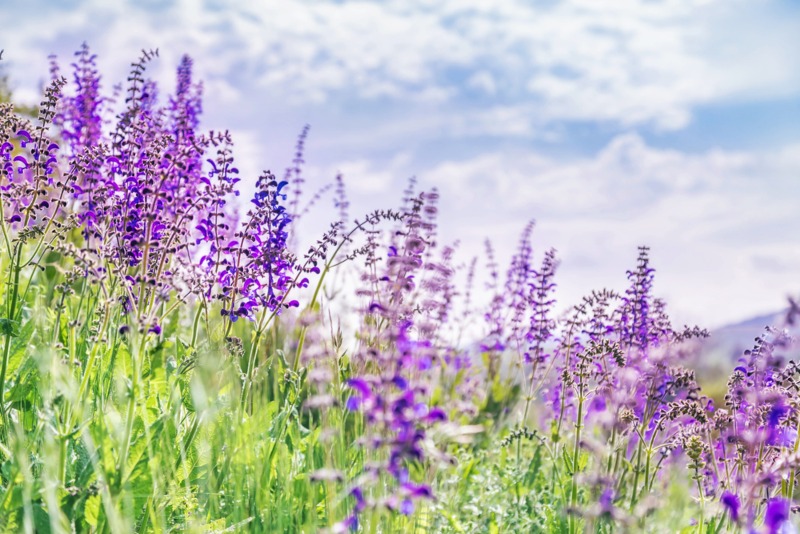
Meadow sage is a summer perennial that grows upright to about 16-24 inches high. It is a loosely branched subshrub that blooms from May-August. This plant originated in Europe in the Mediterranean. Meadow sage grows best in environments with full sun exposure, and its flowers are blue-violet, pink, or white in color.
Azure Blue Sage (Salvia azurea)
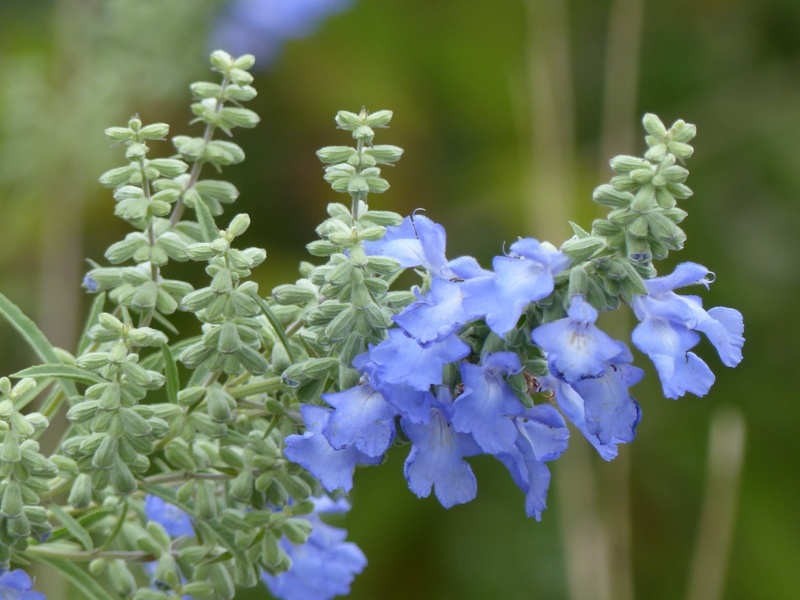
Azure blue sage is a perennial that grows in flatwoods and sandhills. It blooms from August-November and attracts bees, butterflies, and hummingbirds. The flowers are a sky-blue color. Azure blue sage produces only stem leaves, no basal leaves, and it grows in zones 8-9 while flourishing in very dry, well-drained soils. They grow up to 2-4 feet tall in full sun exposure.
Purple Velvet Salvia (Salvia leucantha)
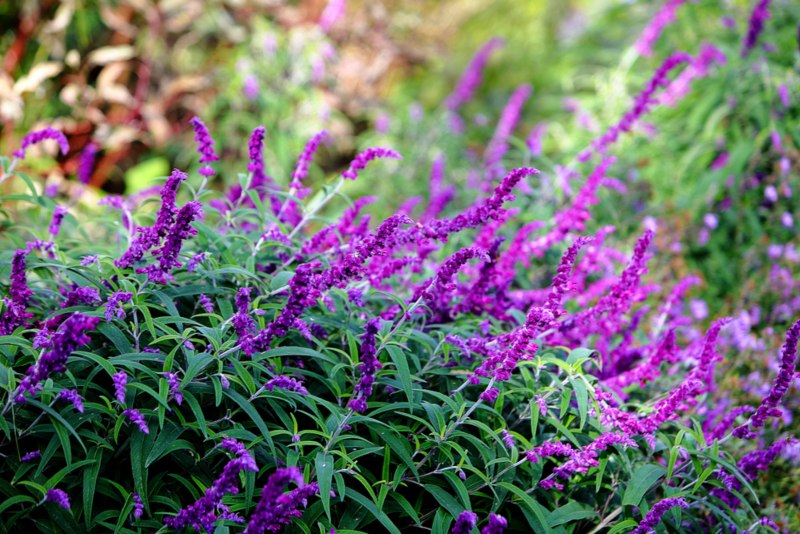
Purple velvet salvia is a woody salvia that produces deep purple blossoms. It is a perennial that grows best in a sheltered spot in well-drained soil. It grows up to 100 cm in height and blooms from May-November.
Summary
Salvia are beautiful, fragrant plants that thrive in sunny environments and produce different colorful blooms, depending on which kind you grow. Each type of salvia has its own unique features and growth requirements, but many of these make great summer or fall plants that will liven up your garden. Decide which ones appeal to you and start planting!





